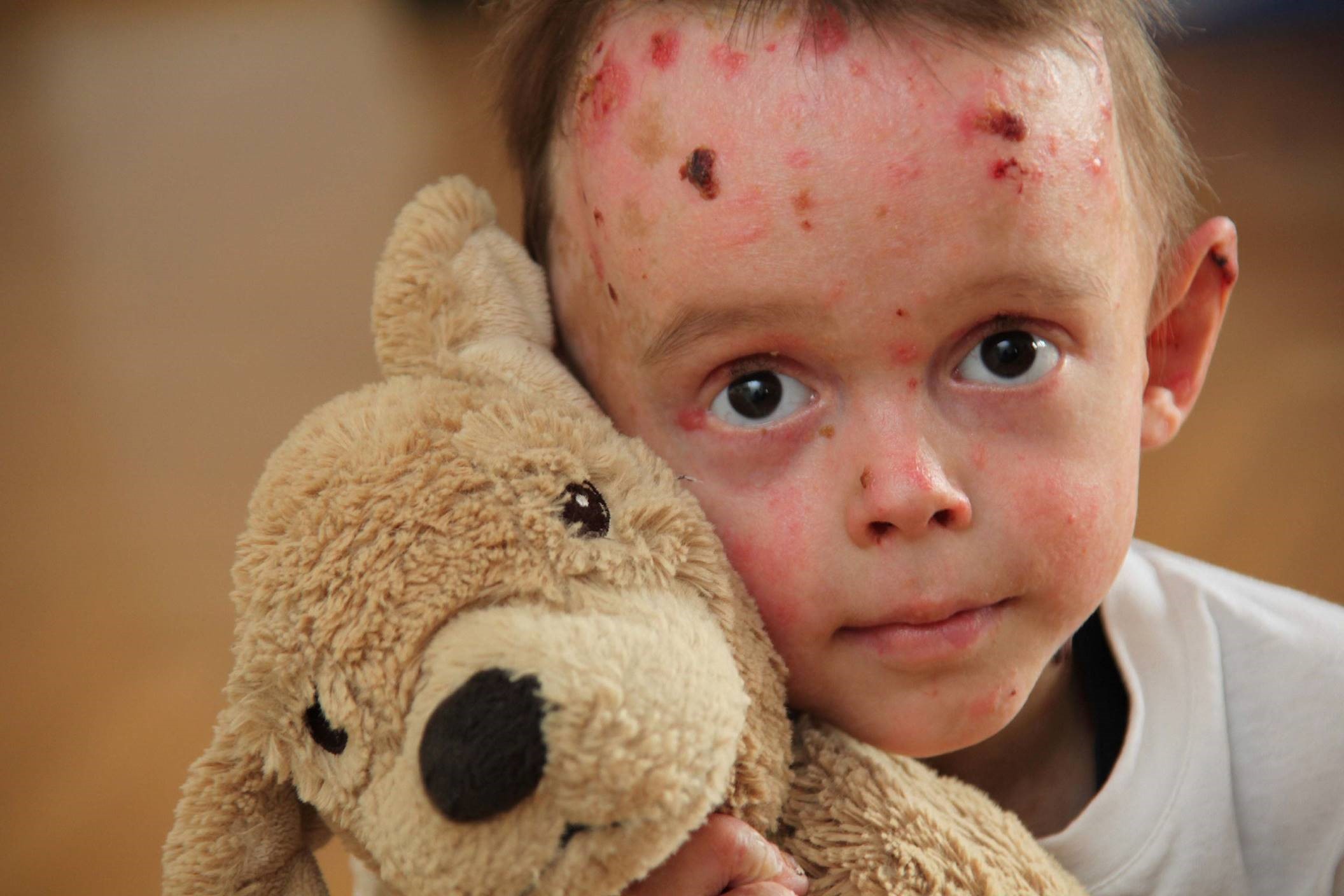An experimental medicine to treat the rare inherited skin disorder epidermolysis bullosa (EB) is on track to start trials in patients thanks to the perseverance of the charity team at LifeArc.
Epidermolysis bullosa (EB) is a group of genetic conditions that causes the skin and mucous membranes to blister and tear in response to very minor injury or pressure – even just the friction of clothing or swallowing food. There are no effective treatments for the condition and in severe forms it is often fatal.
Opportunity through partnership
The potential of the experimental medicine was identified through a partnership that LifeArc has with the EB charity DEBRA Austria. As part of the collaboration, LifeArc experts offered ‘portfolio review’, a process in which they assess and advise on the potential of research proposals and completed projects that have been funded by charities, and identify promising findings.
Asked by DEBRA to review preliminary data, the LifeArc team highlighted positive findings in preclinical in vitro and in vivo data for a compound known as TXA127 in recessive dystrophic epidermolysis bullosa (RDEB), a particularly severe subtype of EB.
To be able to demonstrate whether TXA127 could actually deliver the benefits that preliminary studies suggested, LifeArc recommended DEBRA fund further preclinical investigations and, following on from those, a trial in patients would need to be conducted.
Collaborating to overcome project blockers
But there were a few hurdles to overcome before a trial could begin. The owner of TXA127, Constant Therapeutics, was already investigating the compound for use in stroke. While supportive of a trial, the company’s resources were fully committed to the stroke indication and did not have the capacity to study TXA127 for RDEB without additional support.
Another hurdle was the formulation of the compound.
“TXA127 was being investigated as a subcutaneous injection. This would not be practical for RDEB patients, as repeat injections would be too painful, and might cause further blistering. If it is going to be acceptable to children with RDEB, the drug needs to be in liquid form and easy to swallow,” explained Rainer Riedl, Chairman at DEBRA Austria.
Both LifeArc senior charity manager, Madhu Madhusudhan, and Constant Therapeutics CEO, Rick Franklin, believed there might be a way around both issues. Together they connected groups with an interest in EB and created a plan for progressing TXA127 into a clinical trial.
Alliance of four EB charities
As a result, four EB charities from three different countries – DEBRA Austria, Cure-EB (UK), EB Research Partnership (US) and EB Medical Research Foundation (US) – have each agreed to provide funding towards a two-stage, $2.4M drug development plan. The first stage will be dedicated to developing an oral formulation of TXA127. The second stage – a phase two trial in RDEB patients – will then be able to begin in Europe and the USA (expected to begin in 2020).
The trials will be carried out by Constant Therapeutics which, with the additional funding, has been able to add the RDEB study to its clinical development plan for compound TXA127.
Commenting on the collaboration Rick Franklin, CEO, Constant Therapeutics, said:
“Without the willingness of all parties to collaborate, I am not sure we would have been able to get to such a positive conclusion. It is my feeling that this collaboration can serve as a model for projects around other rare diseases.”
Find out more about portfolio reviews and how we work with charities.

